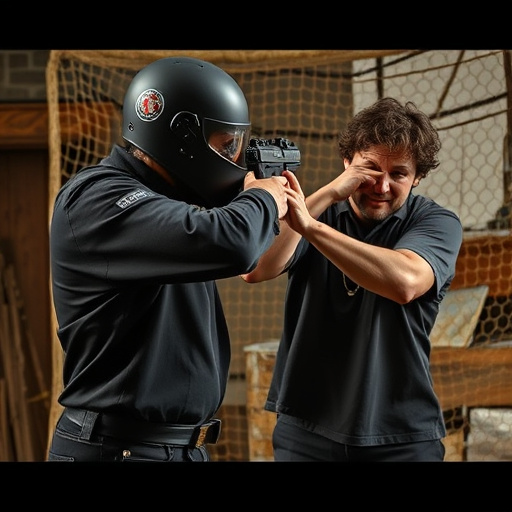Tactical pepper spray deployment methods vary from traditional spray canisters to advanced handheld guns and fabric formulations, each offering unique benefits in range, accuracy, and convenience. Effective use involves targeting eyes with swift bursts, requiring training for optimal success. Understanding local laws, storage, maintenance, and deployed techniques are crucial for safe and effective tactical pepper spray protection.
“Discover the power of nature’s defense mechanism with our in-depth look at capsaicin-based personal protection devices. This article explores how this natural compound, famously known for its heat in chili peppers, transforms into an effective self-defense tool—the tactical pepper spray. We’ll delve into the science behind capsaicin, uncover various deployment techniques, and provide essential safety tips for those looking to protect themselves. Learn about the different tactical pepper spray deployment methods and gain valuable insights into personal protection.”
- Understanding Capsaicin: The Active Ingredient
- Tactical Pepper Spray: Deployment Techniques
- Personal Protection: Application and Safety Tips
Understanding Capsaicin: The Active Ingredient
Capsaicin, the active ingredient in tactical pepper spray, is a natural compound derived from chili peppers. It’s what gives spicy foods their heat and pungent aroma. When deployed, capsaicin irritates the eyes, nose, throat, and skin, temporarily disabling an attacker by causing intense pain, tears, coughing, and difficulty breathing. This potent substance is highly effective in self-defense scenarios, especially for individuals who need a non-lethal but powerful response option during tactical situations.
The deployment methods of capsaicin-based personal protection devices vary, from traditional spray canisters to advanced technologies like handheld guns and even fabric-embedded formulations. Each method offers unique advantages in terms of range, accuracy, and convenience, catering to different user preferences and needs. Understanding these deployment mechanisms is crucial when choosing the right self-defense tool, ensuring individuals are equipped with an effective solution for tactical pepper spray applications.
Tactical Pepper Spray: Deployment Techniques
Tactical pepper spray is a powerful personal protection tool, and its effective deployment is crucial for self-defense scenarios. Law enforcement officers and civilian users alike employ various techniques to maximize its impact. One common method involves aiming for the eyes, as they are sensitive areas, causing temporary blindness and disorientation. This tactic allows users to create an opening in potential threats, enabling a safe escape or the chance to administer further defense measures.
The spray can be deployed in quick bursts at close range, ensuring the target is enveloped in the irritant mist. Training in proper technique is essential; practicing different scenarios helps individuals master the timing and distance for optimal effect. By combining pepper spray with other self-defense strategies, users can enhance their overall safety and deter potential assailants effectively.
Personal Protection: Application and Safety Tips
Personal protection is a key aspect when it comes to ensuring safety, and tactical pepper spray has established itself as an effective tool in this regard. When deployed, capsaicin-based sprays can create a temporary but powerful barrier against potential threats. For optimal effectiveness, it’s crucial to understand the various deployment methods available. One common tactic is the ‘quick pull’ method, where the user simply twists and pulls the nozzle to release a burst of spray directly into the attacker’s face, providing a strategic advantage in close-quarters combat.
Safety tips are essential when carrying and using pepper spray. Users should ensure they are familiar with local laws regarding its possession and use. Proper storage is vital; keep it out of reach of children and in a cool, dry place. Regular maintenance, such as checking expiration dates and testing the spray mechanism, is recommended. Additionally, users must be trained to avoid eye contact when deploying, as capsaicin can cause severe irritation. Practicing tactical deployment methods ensures individuals are prepared for real-world scenarios, enhancing their personal protection capabilities.
A capsaicin-based personal protection device, often in the form of tactical pepper spray, offers a powerful non-lethal self-defense solution. By understanding the active ingredient’s effects and employing effective deployment methods, such as those detailed for tactical pepper spray, users can ensure their safety while adhering to safe application practices. Armed with knowledge and the right tools, individuals can navigate potential threats confidently, leveraging strategic deployment techniques for optimal protection.
